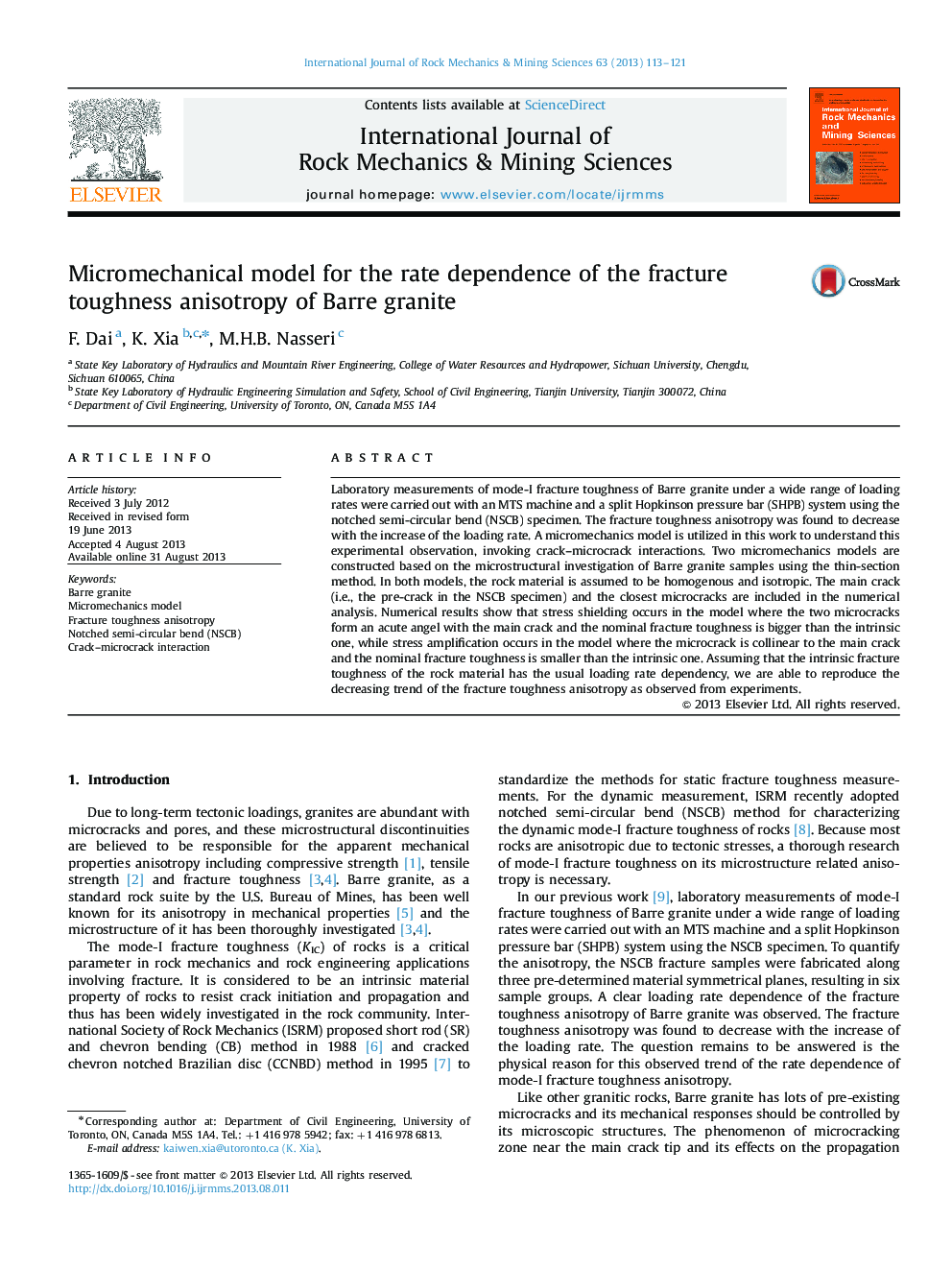| Article ID | Journal | Published Year | Pages | File Type |
|---|---|---|---|---|
| 7206778 | International Journal of Rock Mechanics and Mining Sciences | 2013 | 9 Pages |
Abstract
Laboratory measurements of mode-I fracture toughness of Barre granite under a wide range of loading rates were carried out with an MTS machine and a split Hopkinson pressure bar (SHPB) system using the notched semi-circular bend (NSCB) specimen. The fracture toughness anisotropy was found to decrease with the increase of the loading rate. A micromechanics model is utilized in this work to understand this experimental observation, invoking crack-microcrack interactions. Two micromechanics models are constructed based on the microstructural investigation of Barre granite samples using the thin-section method. In both models, the rock material is assumed to be homogenous and isotropic. The main crack (i.e., the pre-crack in the NSCB specimen) and the closest microcracks are included in the numerical analysis. Numerical results show that stress shielding occurs in the model where the two microcracks form an acute angel with the main crack and the nominal fracture toughness is bigger than the intrinsic one, while stress amplification occurs in the model where the microcrack is collinear to the main crack and the nominal fracture toughness is smaller than the intrinsic one. Assuming that the intrinsic fracture toughness of the rock material has the usual loading rate dependency, we are able to reproduce the decreasing trend of the fracture toughness anisotropy as observed from experiments.
Keywords
Related Topics
Physical Sciences and Engineering
Earth and Planetary Sciences
Geotechnical Engineering and Engineering Geology
Authors
F. Dai, K. Xia, M.H.B. Nasseri,
